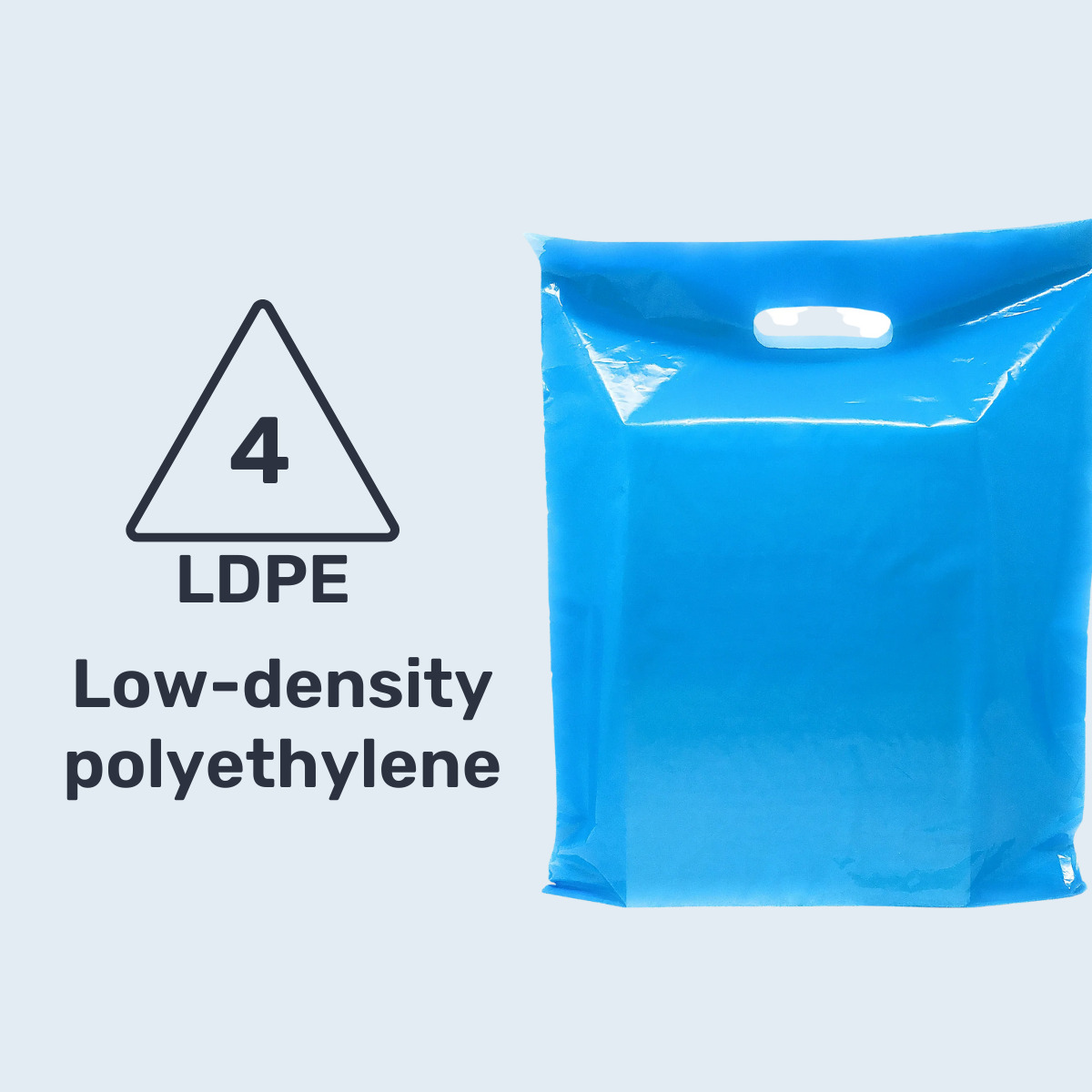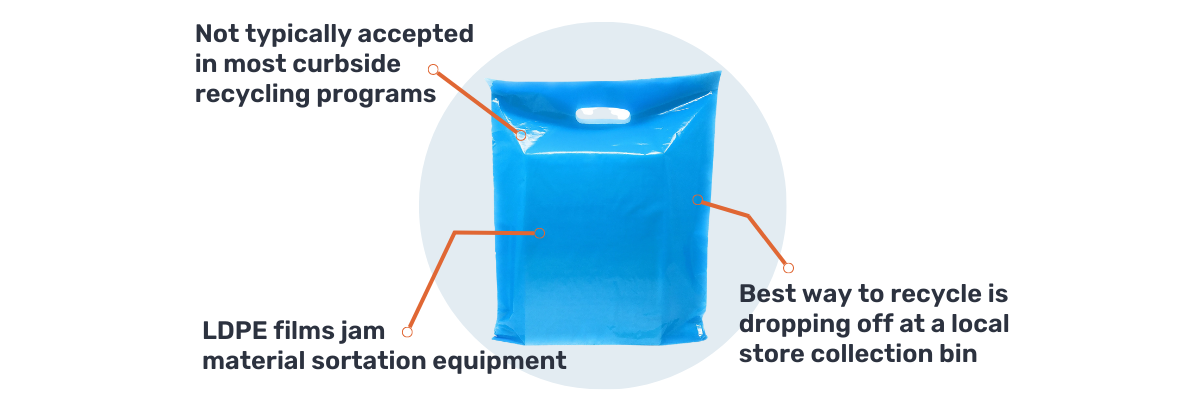
Understanding Packaging EPR: What Brands Need to Know Get up to speed…


Welcome to Plastic Ingenuity’s blog series on packaging polymers! In this series, we will explore the different types of polymers used in packaging and their properties, applications, and environmental impact. We will also discuss the latest developments in sustainable packaging and how the industry is evolving to meet the growing demand for circular solutions. Join us as we dive into our fourth installment in a seven-part series with material #4: LDPE (Low-Density Polyethylene)

Low-density polyethylene (LDPE) is a type of plastic that is commonly used in packaging applications due to its flexibility, transparency, puncture, and chemical resistance at thin thicknesses. Here are some examples of LDPE packaging applications:
▪️ Bags: LDPE bags are commonly used in grocery stores, supermarkets, and other retail outlets to pack and carry products. LDPE bags can also be used for garbage and waste disposal.
▪️ Wraps: LDPE wraps are used for food packaging, such as wrapping fresh produce, meats, and sandwiches. LDPE wraps are also used in the packaging of medical and pharmaceutical products.
▪️ Shrink wrap: LDPE shrink wrap is used to tightly pack products for transportation and storage. Shrink wrap is commonly used in the packaging of electronics, books, and other products.
▪️ Bottles: LDPE bottles are commonly used for packaging various liquids, such as cleaning products, detergents, and personal care items.
▪️ Bubble wrap: LDPE bubble wrap is used as a cushioning material for the protection of fragile items during shipping and handling.
▪️ Stretch film: LDPE stretch film is used to wrap pallets of products for transportation and storage. Stretch film is commonly used in the packaging of food and beverage products, as well as other industrial applications.
LDPE does get recycled but at lower rates than other polymers we’ve discussed. About 435 million pounds gets recycled every year but that’s about 6% of total production. Films, like bags made from LDPE, present challenges at the material sortation facility. They tend to jam up equipment. That is why films are typically not allowed in curbside collection bins.
However, there are initiatives and technologies being developed to improve the recycling of LDPE. For example, new sorting technologies are being developed to better identify and separate LDPE from other plastics, and new chemical recycling methods are being explored to break down LDPE into its component parts for reuse. The best way to recycle LDPE films is to drop them off at a store collection bin in your area.
Recycled LDPE can be made into new films, like bags and shipping envelopes. A significant amount gets consumed in the durable goods industry for items like lumber and furniture.
Overall, LDPE is a versatile material that is widely used in packaging applications due to its excellent properties and cost-effectiveness, with more robust recycling opportunities on the horizon. For more information about sustainability in the plastics industry, visit www.plasticingenuity.com/sustainability
